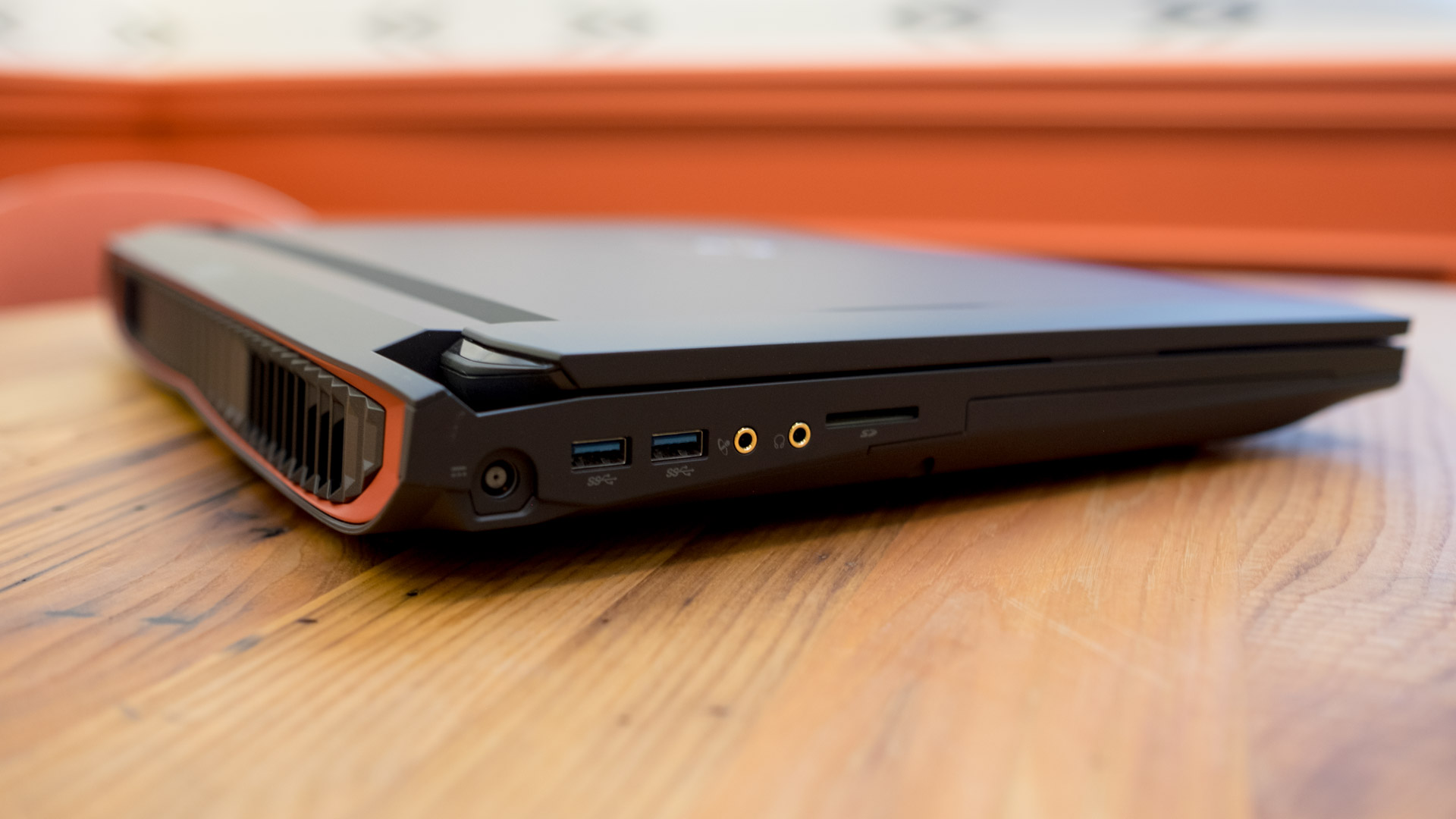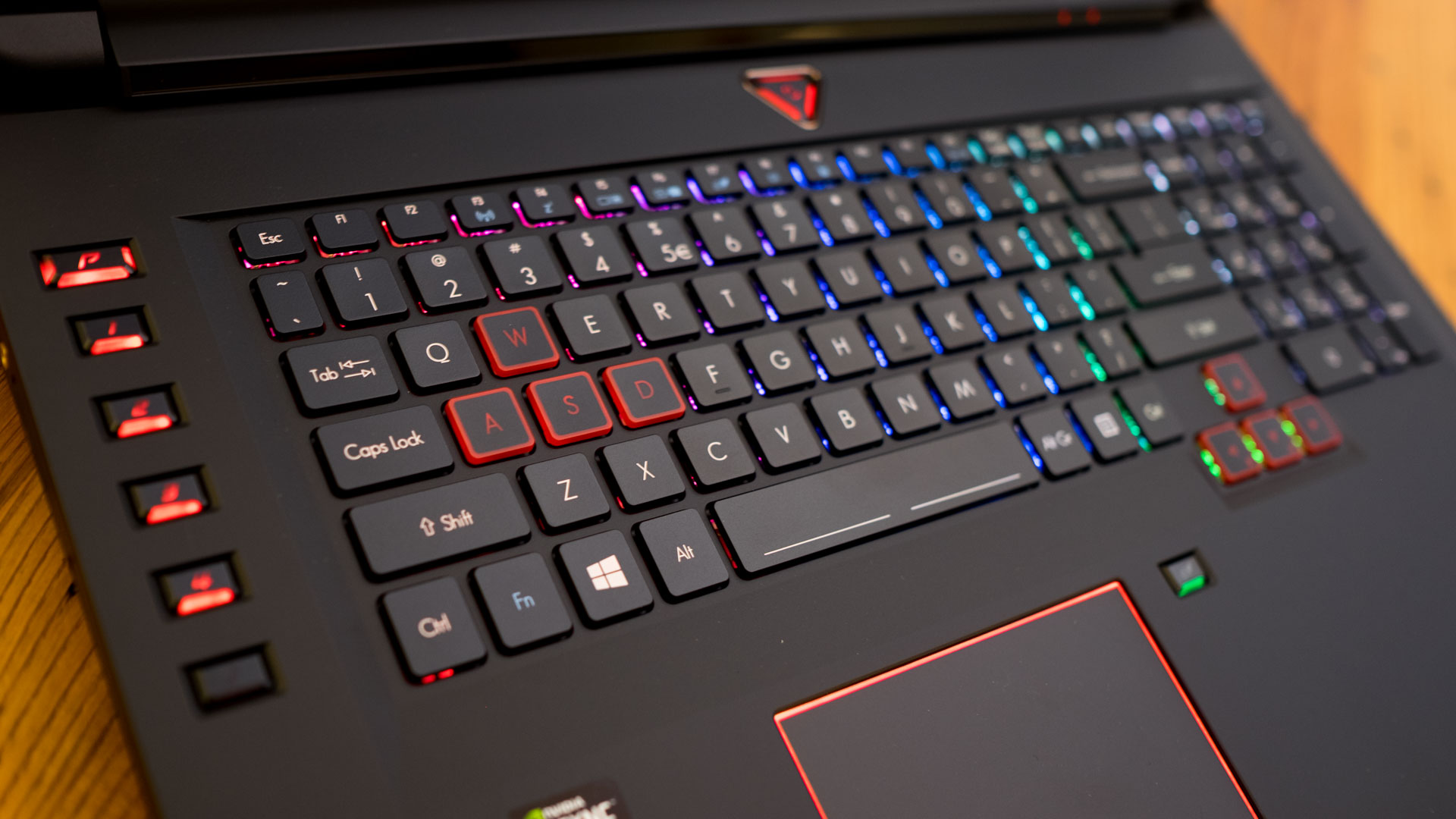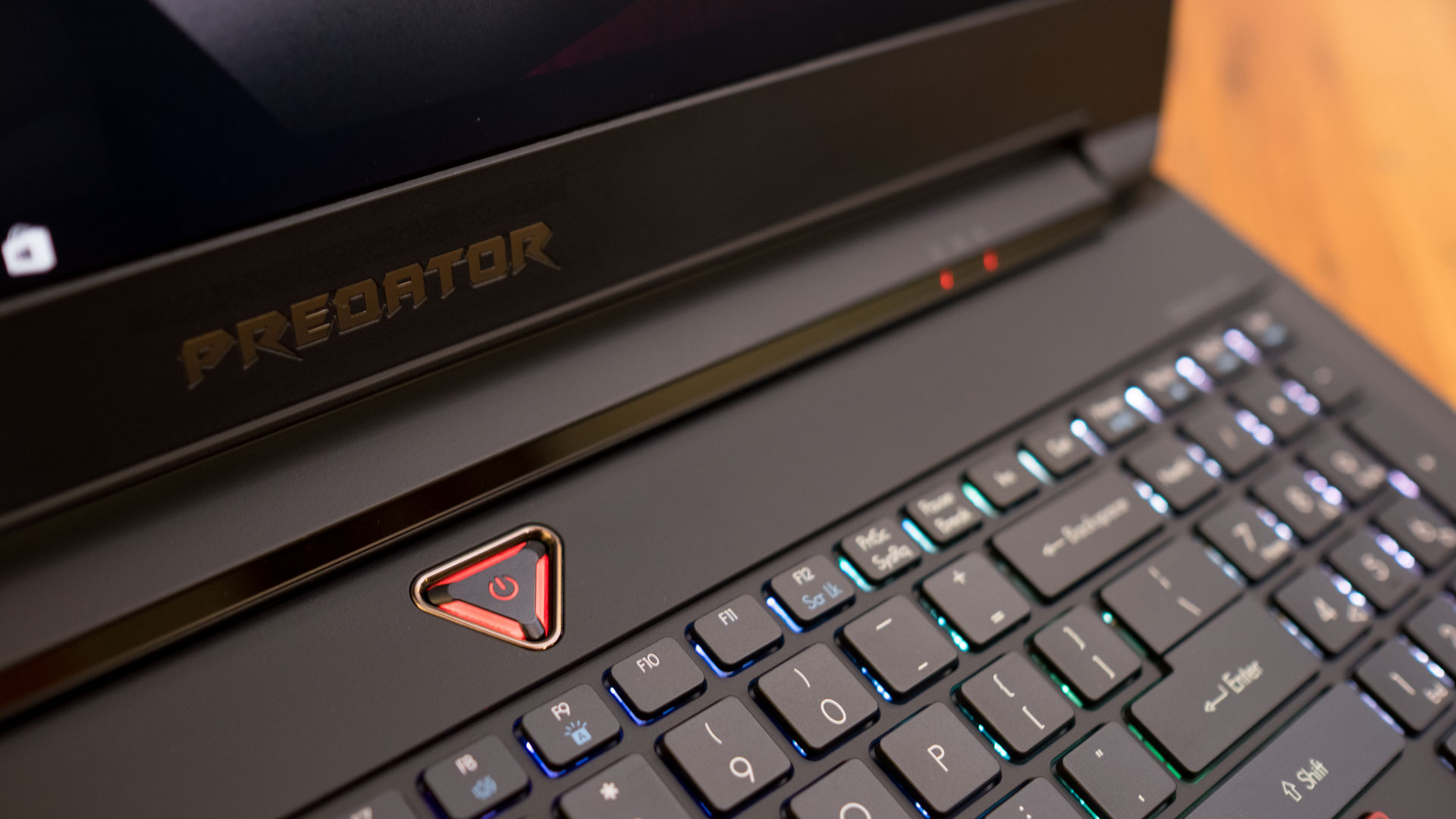Why you can trust TechRadar
Priced at $3,169 (about £2,520, AU$4,270), the Acer Predator 17 X is over $1,000 more than the equally large 17-inch Lenovo IdeaPad Y900. However, keep in mind that the top Y900 loadout currently sports a considerably smaller 128GB SSD, half the memory (16GB), a mobile Nvidia GTX 980M and does not support 4K UHD resolution.
Acer also offers the Predator 17 X with a Full HD screen but otherwise identical specs for $2,799 (about £2,220, AU$3,770), which falls more in line with the $2,499 or £1,999 (about AU$3,340).
Let’s take a moment to appreciate how heavy this notebook is. With a 17-inch screen, two hard drives, and an Nvidia GeForce GTX 980 housed inside, the Predator 17 X weighs just over ten pounds, and that’s not counting the power brick, which really is about the size of an average building brick. Measuring 16.65 x 12.66 x 1.77 inches (42.3 x 32.2 x 4.5cm; W x D x H), this is the gaming elephant in the room.

Forget about all practical concerns. This is the kind of notebook that you use to make a statement about power and performance. The Gigabyte P57X’s 6.6 pounds seems almost dainty in comparison to the Predator 17 X, but if you’re truly looking for a thin system without compromising on power, then the Razer Blade systems are probably your best bet.
However, in this case, I argue that the heft may be beneficial, as the notebook isn’t likely to slide around during intense gaming sessions.
As expected, the Predator comes with all the ports necessary to plug in a VR headset or external display, including a USB port that continues to provide charging power while the system is powered down.
Here’s how the Acer Predator 17 X performed in our suite of benchmark tests:
3DMark: 4K Cloud Gate: 23,313; Fire Strike: 10,454; Sky Diver 25,415; Fire Strike Ultra: 2,983
Cinebench CPU: 696 cb; Graphics: 102.3 fps
Geekbench 3: Single-Core Score: 3,821; Multi-Core Score: 13,837
PCMark 8 (Home Test): 2,926 points (4K); 3,076 (1080p)
PCMark 8 Battery Life: 2 hours and 3 minutes at 4K. Battery Life (TechRadar movie test): 2 hours and 40 minutes
The Division (1080p, Ultra): 55 fps; (1080p, Low): 132 fps
GTA V (1080p, Ultra): 76 fps; (1080p, Low): 159 fps
Performance
Some might balk at the idea of spending $3K on a notebook that sports a last generation video card, but the GeForce 980 still packs a considerable punch. Although you’re not likely to get 60 fps with many of the latest games at 4K resolution and maxed out settings, a little compromise and some adjustments can go a long way.
Sign up for breaking news, reviews, opinion, top tech deals, and more.
Again, the Predator 17 X isn’t the notebook you want to leave on battery for very long. PCMark put its battery life at about 2 hours thanks to the power hungry 4K resolution screen, but our looping movie test shows some more time than that.
At 4K, the battery held out for 2 hours 30 minutes, and even if you try cutting the resolution down to 1080p, it only buys an extra 10 minutes of battery life. In any case, we can’t emphasize enough how you should avoid draining the Predator 17 X unless you’re willing to put up with the three-and-a-half hours it takes to fully recharge its whale-like battery.

The real test is with games, and Dishonored 2 stayed at a modest 30 fps while playing at 4K resolution with Ultra settings and G-Sync turned off, which dipped to 20 fps or below on some of the more complex scenes. Dropping the resolution down to 1,920 x 1,080 helped bring graphical performance up to between 50-60 fps.
Similarly, Battlefield 1 stayed between 30-40 fps at 4K resolution at Ultra settings but without DirectX 12 turned on. Switching to 1080p kicks the frame rate up significantly, bringing in about 90-110 fps.

Additionally, the SteamVR test utility shows that the Predator 17 X is well equipped to handle virtual reality applications. If you need a little more juice, Acer’s PredatorSense software comes pre-loaded on the system, making it easy to overclock both the CPU and GPU for a little extra performance.
Grand Theft Auto benchmark scores are strong on the Predator 17 X, showing an average of 90 fps at 4K resolution using custom settings. However, benchmark performance with The Division is noticeably less so. Ultra settings at 1080p had a passing rate of 54 fps, but the frame rate dropped way down to about 25 fps once I turned up the resolution.
We liked
As its title indicates, the Acer Predator 17 X is one monster of a gaming machine. It’s heavy as all hell, but it’s packed with features and is the very definition of a desktop replacement notebook. Having both an SSD and a 1TB spinning drive made it a breeze to boot up and get straight to gaming.
Although it might not have a current generation video card, it provides solid performance for the games we played. Plus, according the SteamVR test, the notebook is totally VR-ready. Most importantly, it stayed cool and quiet throughout the hours playing games on the crisp 4K screen.
We disliked
Aside from the weight, perhaps the most annoying aspect of this behemoth is the loud jingle the Predator 17 X plays when it boots up. It may be easy to overcome that annoyance by never rebooting the system, but one thing that’s a little harder to overlook is how the notebook sports a previous generation video card.
Even though the GeForce GTX 980 provides more than adequate performance at 1080p, it’s less so at 4K and it can be tough to justify a $3k investment when competing systems have GTX 1070s built-in. But mostly, the thing I hated most about the notebook is how it takes over three hours to fully charge its mammoth battery, and at least two hours when it’s at 40%.

Final verdict
When considering a high-end gaming notebook, you need to look at performance, features and style. Acer has all those bases covered, and even though it’s pricey for a notebook that’s still using a previous generation video card, all the packed-in features — including the 4K screen, an SSD and hard drive combo, and booming sound system — make it worthwhile.
Although performance at highest settings and 4K resolution can be middling, a few adjustments can go a long way toward boosting frame rates. Ultimately, this gaming monster is one Predator that is well worth hunting with.
